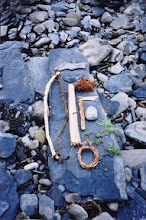
Some call this Butter and Eggs. Others call it Toadflax.
Linaria vulgaris is found in poor soils around pastures, and is often grown in flower gardens as a sort of 'local snapdragon' flower. It is considered an invasive pasture weed in North American, where it is not native. It is native and widespread throughout Europe, Asia, Russia and beyond... It really gets around!
It's not exactly a huge medicinal plant with a lot of history that I could find, but it could be used as a skin/infection/sores/ulcerous conditions, if you chop up the whole plant and then boil it in lard until you get a green ointment. They say that the flowers, when soaked in milk, makes a great fly poison.
I mean, I think warm milk might just attract and drown flies on it's own, but maybe the flowers help?
(I don't think this was tested on some sort of double blind study! ha ha!)
Evidently the Germans used it for a yellow dye.
Also, it is considered toxic and cows and sheep and horses avoid it, thus it spreads throughout a pasture area and competes with other beneficial or preferred browse, so it creates problems in that respect.
To my, however, by far the coolest thing about this plant is the fact that the bright yellow 'egg yolk' attracts the larger bees, like wood or carpenter bees, or bumblebees, and only they are big enough to push into the flower's inner sanctum to get to the nectar, and the pollen coats the bee's back and sides as it drinks the nectar, thus insuring pollination of all the remaining flowers. Pretty crazy!














No comments:
Post a Comment